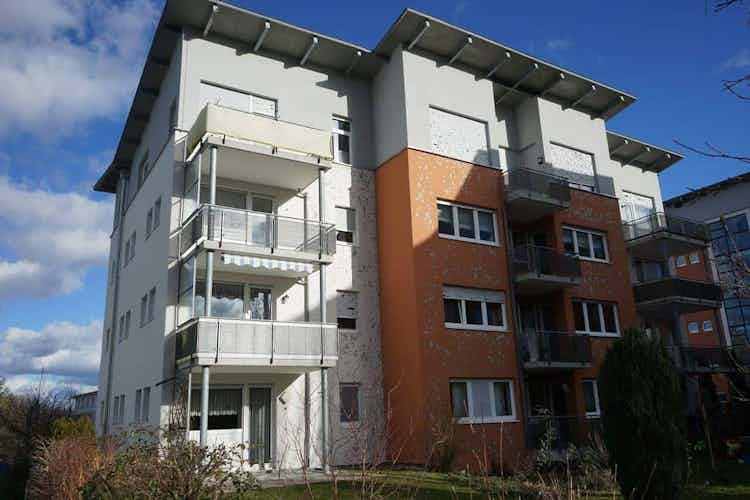Home insurance can offer a little peace of mind if there is any loss or damage to your home. Finding the right type of insurance specific to your needs is essential. Doing so will mean you can be confident that your home and the things you value have protection. You will generally have three types of cover to choose from:
- Buildings insurance
- Contents insurance
- Combined buildings and contents insurance.
Building insurance safeguards the structure of your home, whilst content insurance protects your belongings. The combined option means you get both buildings and contents insurance as a joint policy, which covers both your belongings and your home's structure.
To understand the difference between building insurance and content insurance, remember the following:
- Buildings insurance refers to permanent fixtures and fittings, such as kitchens and bathrooms.
- Contents insurance refers to your possessions stored within the home, such as TVs and furniture.
What does buildings and contents insurance cover?
Buildings insurance
If your property's structure encounters damage, then the building insurance you have in place will cover the costs of repairing it. This could mean the costs of repairs for your roof, walls, windows, or any other part of your structure, as well as permanent fixtures. These would include your toilets, baths and fitted kitchens.
Depending on the building policy you take out, you may also be able to use it to cover various structures around the home, such as the driveway, outside walls and the garage. Additionally, different insurers will have varying policies. As such, you would need to be clear on exactly what events each of them may cover you for.
Here are a few examples of events that you can typically claim for using building insurance:
- A fire, explosion, or damage from smoke
- Vandalism
- Trees that have fallen on your home
- Subsidence, the slow sinking of the foundations of a house
- Damage caused by water from leaking pipes
- Damage caused by oil leaking from your heating system.
- Car and lorry collisions
- Natural events or ‘acts of God,’ such as storms and floods
Essentially, buildings insurance is designed to cover the cost of any rebuilding that may need to take place in your home, from the ground up.
Contents insurance
Should items within your home get stolen, damaged, or destroyed, your contents insurance would cover the cost of replacing them. This type of insurance protects valuable contents not physically attached to the building. These are the items you would take with you if you were to move.
Some examples of items which would be covered by contents insurance are:
- Clothing
- Electrical goods
- Jewellery
- Furniture
Like buildings insurance, different insurers and policies will offer differing levels of contents cover. So, it's crucial to get a comprehensive overview of what each will provide. 'Accidental damage cover' and 'Personal possessions cover' are typically optional add-ons to insurance packages. Accidental cover is for if you damage your property by accident at home. Personal possessions cover is for items that you'll often take outside of the house, like laptops, cameras, and jewellery.
Rather than assuming a policy covers something, check if it does. Generally speaking, policies should provide cover against fire, flood and theft.
Is it best to get buildings and contents insurance together?
Rather than buying buildings and contents insurance separately from different providers, it’s also possible to take out joint buildings and content insurance. Opting for joint insurance might make your policy cheaper overall. If something damaged both your possessions and structure, like a fire, you could also save the trouble of making claims with different insurers.
Whether you should buy both together depends on your circumstances. There are, however, situations where it’s only necessary for you to have just contents insurance.
You own an individual flat
If you own an apartment that sits in a block of flats, you do not need to have building insurance unless you own part of the freehold outright (the actual building and the land it sits on). If you bought your flat on a leasehold, then contents cover would be an option worthwhile considering to protect your possessions.
You’re renting a property
If you're renting a property, it's your landlord's responsibility to take out building cover to ensure the property's structure is protected. Therefore, you do not need to buy it yourself. However, it’s certainly worth you considering contents insurance for your belongings, and tenancy agreements will often require you to have it in place.
When to opt for buildings insurance
The cases where you must have building insurance, are if you already own or plan to buy a house or an entire block of flats. In these instances, mortgage lenders will typically require that you have the right buildings insurance in place for the term of your mortgage. It’s often possible to buy this from your lender alongside your mortgage. It's advisable to see what your options are with different providers and potentially find better quotes.
No matter what type of insurance you go for, always bear in mind that having a policy in place won't guarantee coverage for every single item you own. To avoid being underinsured and incurring high, unplanned costs, be sure to read the terms and conditions of your policy thoroughly. Particularly, paying attention to any exclusions listed in the policy, so you’re aware of the items and events you’re not able to claim for.
Doing this will help put yourself in the best position of ensuring you have the level of cover that’s right for you.







